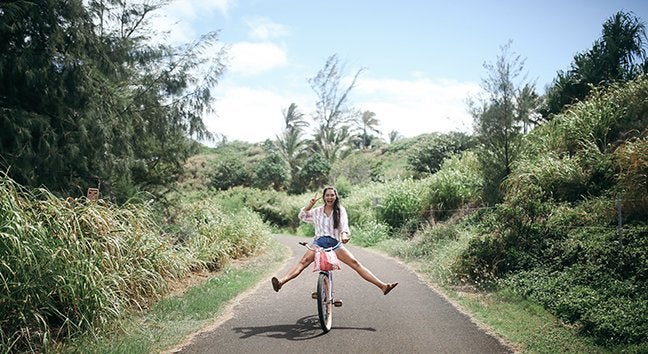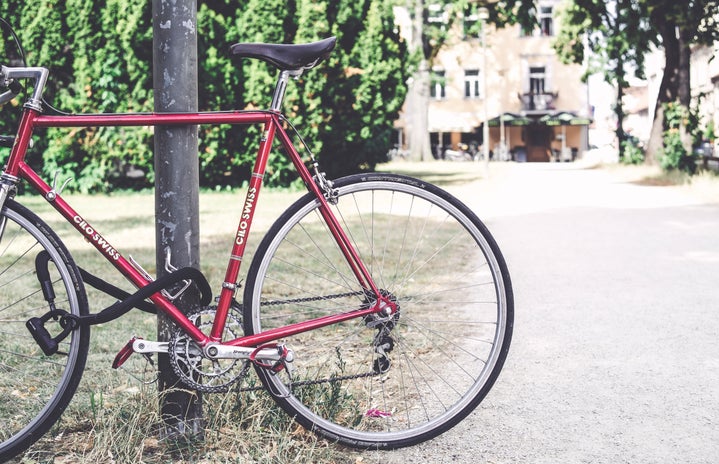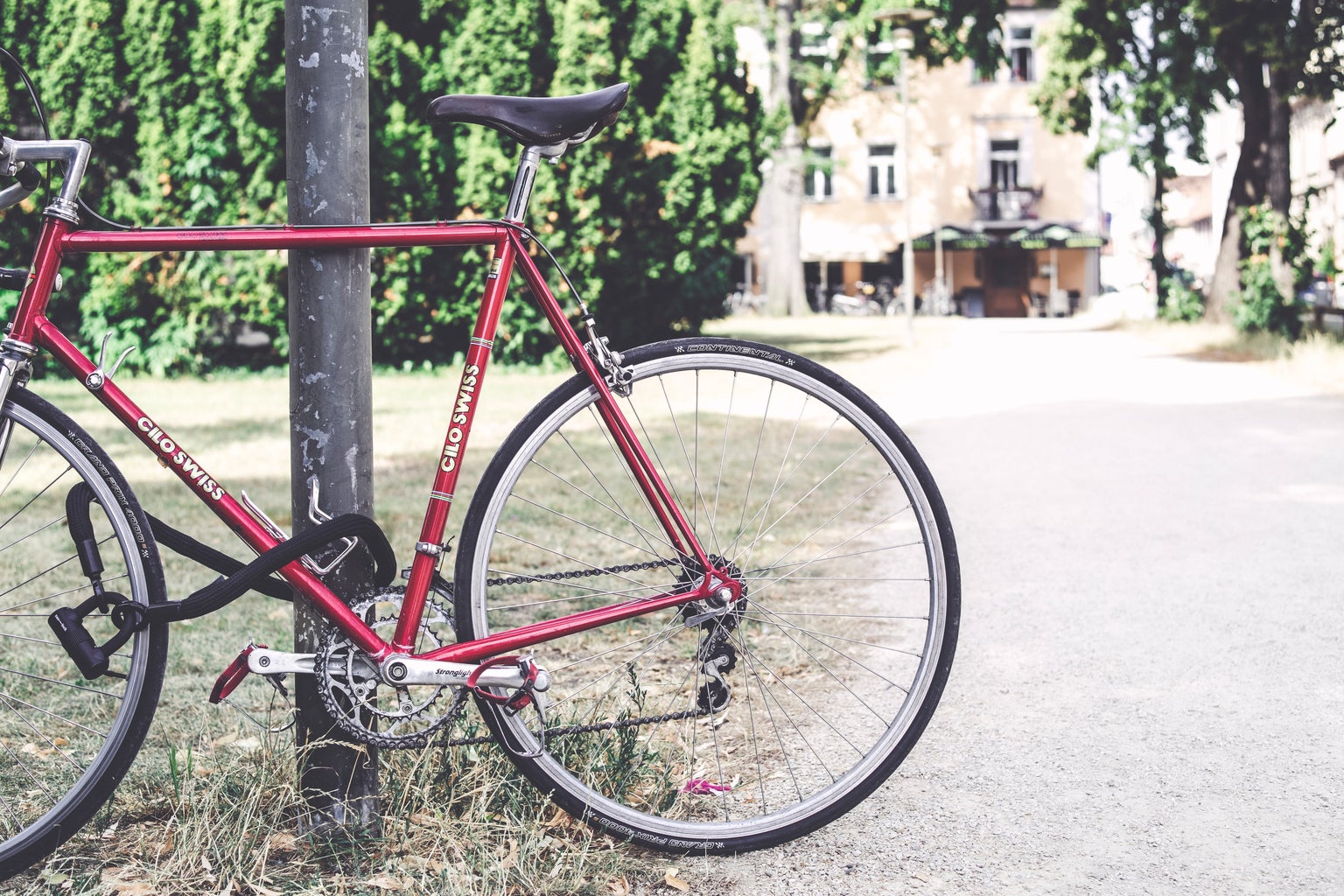The common expression, “It’s just like riding a bike,” is used to describe an action that is easy; something that is second nature.
And yet, ironically enough, it appears that riding a bike is not “just like riding a bike” to UCSB students. As the new quarter picks up, it has become quite clear that people don’t know how to bike.
I’ll admit, I’ve had my fair share of near accidents. There have been a few occasions where I have failed to look both ways before proceeding, or braked a little too late. But these minor infractions are nothing compared to the egregious violations I’ve witnessed on the bike paths. Phones out, yields ignored, lives endangered. The campus bike lanes have become the streets of Fast & Furious, a world where traffic rules don’t exist and students Tokyo Drift to Buchanan Hall. It’s bad out here.
55% of UCSB students commute to class via bike. Being such an essential part of UCSB culture, it is imperative that biking is done in a safe manner to prevent accidents and injuries. So, here’s some advice from a seasoned UCSB biker on how to navigate the treacherous lanes during these dangerous times.
1. Fast vs. Slow Biking
There are also varying comfort levels on wheels. Experienced and inexperienced bikers alike hit the campus lanes to get to class, with some going at Lance Armstrong-adjacent speeds and others going the MPH of a grandma. The wide range of speeds is often the reason for accidents, fast disrupting slow (and vice versa). In fact, just last week I witnessed a brutal crash next to the SRB, where speed met its match. It was almost cinematic, the sheer force of the fast biker colliding with a slower one. Both ended up on the ground, which caused surrounding bikers to fall as well.
The solution to this problem is not to monitor speed, but rather divide the lanes. Slow bikers on the right, fast bikers on the left. Fast bikers can easily zoom by, while slow bikers can go at any speed they like.
2. Signaling

Something that has always perplexed me is the lack of signaling on the bike lanes. Time after time I have been involved in near-accidents as people turn without indication. I was once even yelled at after almost hitting someone. I’m sorry, was I supposed to predict you were about to turn onto Cordoba?
Think about it this way: when driving, it is necessary to use blinkers before turning. The blinking light alerts other drivers and pedestrians of what you plan to do, preventing accidents and making the roads much safer. So what makes biking any different?
Maybe people think it’s lame, or maybe people don’t know how to do it. But signaling is actually quite simple, and the perfect way to avoid unnecessary collisions. The proper signals are: stick out your left arm to indicate a left turn, raise your left arm in an L position to indicate a right turn. Alternatively, you can stick out your right arm to indicate a right turn. It’s so simple, yet frequently neglected.
3. Roundabouts
I was talking to a friend about the recent uptick in campus bike accidents, specifically at the roundabouts. To my horror, she replied, “To be honest, I don’t really know how roundabouts work. I just go and hope for the best.”
That was a scary revelation, as UCSB has many roundabouts that enable students to travel to all areas of campus. Based on what I’ve seen, I suspect other people express similar sentiments as my friend.
Majority of accidents I have witnessed occur at the roundabouts, particularly when entering the circle. The solution to preventing these accidents is actually quite simple: yield upon entry. In fact, if you look down on the path before entering the roundabout, the word “YIELD” is written in all caps.
I understand that when following the flow of traffic, it might be difficult to stop before proceeding into the roundabout. Yet that is the only way to avoid accidents. Those already in the circle have the right of way, and by entering without assessing, you end up disrupting the flow more than by making a brief stop.
For a video demonstration, watch this.
4. Follow The Black Asphalt Gravel Road
This one may seem obvious, yet it still deserves to be said: follow the bike paths. They’re there for a reason — to separate bikers from pedestrians and ensure overall safety. If a sign says “Walk Bikes,” you should assume that walking your bike is the safer, more considerate option to those around you. This is especially true when going through the notoriously congested Arbor walkway. Full of people walking to class, clubs tabling and students going to the library, the last thing the Arbor needs is a biker plowing through the crowd.
However, the majority of bikers have discovered a new, unofficial bike path, one that runs between the library and the ILP. Instead of going all the way around the parking lot, past the CHI-5 dorms and through the Psychology building, this “path” allows a more convenient, straightforward access to the ILP and science buildings.
For legal purposes, I do not encourage the use of this path, nor do I use it. But if you hypothetically were to use it, I highly recommend being aware of your surroundings and keeping an eye out for people walking. Hypothetically.
5. Distracted Biking
Finally, navigating the bike lanes requires the cyclist’s full attention. Don’t be trying to switch your music or send a snap while on the bike. Distracted biking not only endangers you, but everyone around you as well.
When you aren’t paying attention to the lane, you run the risk of swerving or missing a yield, which almost always results in an accident. Also, when you take your hands off the handlebar, you better hope you have a strong sense of balance or else you’ll soon be meeting the floor (and inevitably taking other bikers down with you).
I get it: biking is scary! And on a campus full of skilled bikers, the lanes may seem daunting. But I promise you, no one is too skilled to bike safely. And while I know it’s every student for themself on the lanes, there are ways to make sure that we all get from Point A to Point B in a safe manner. At the end of the day, biking is just like riding a bike!







